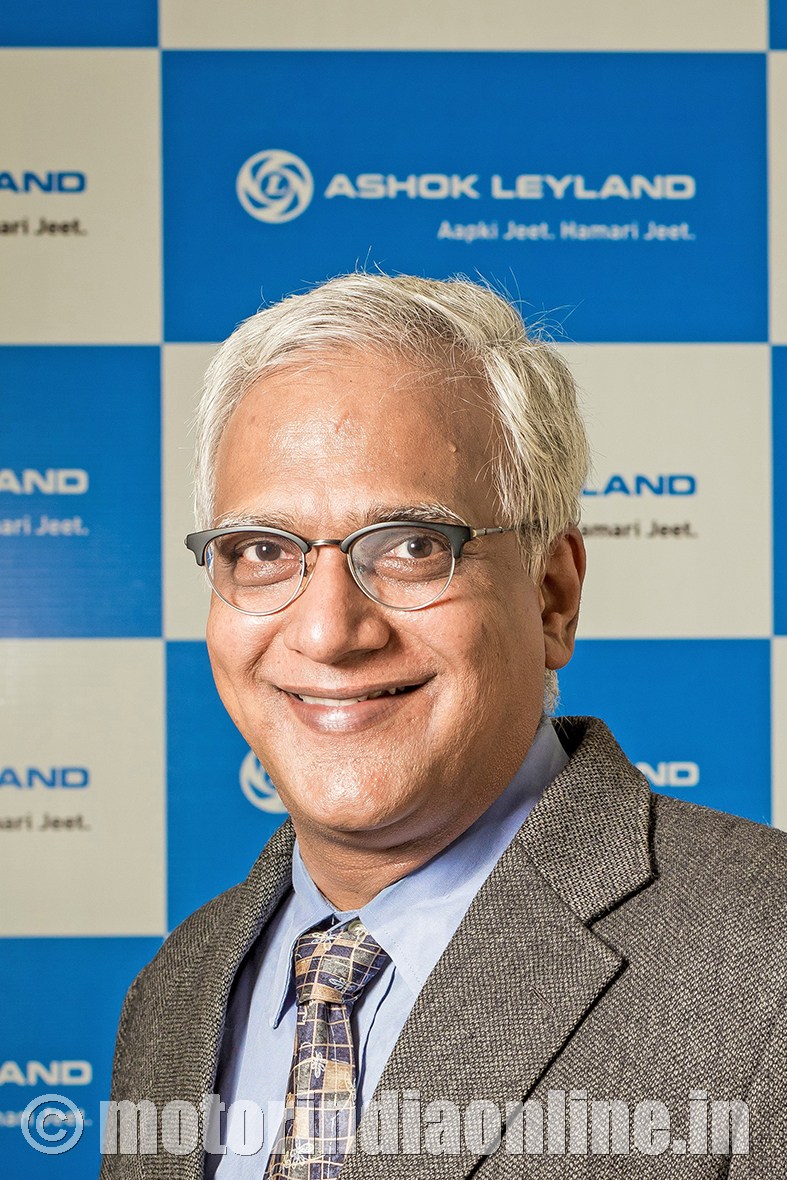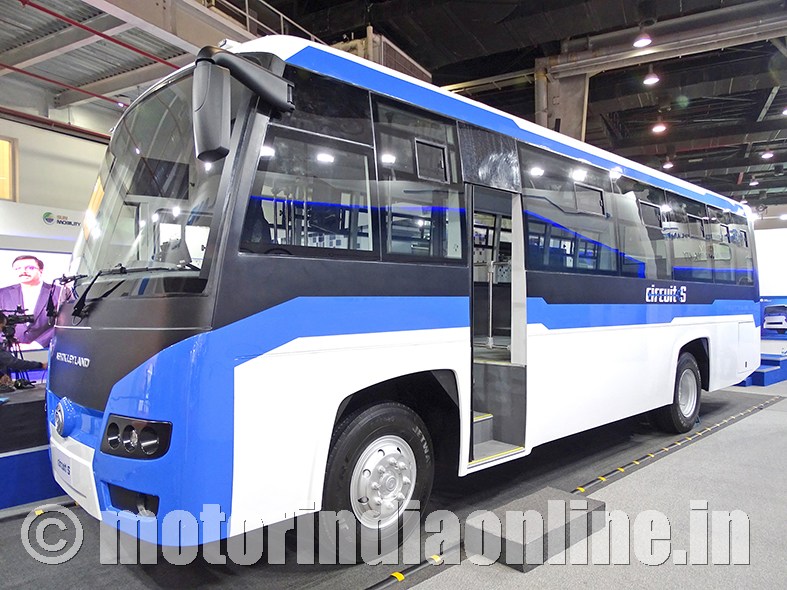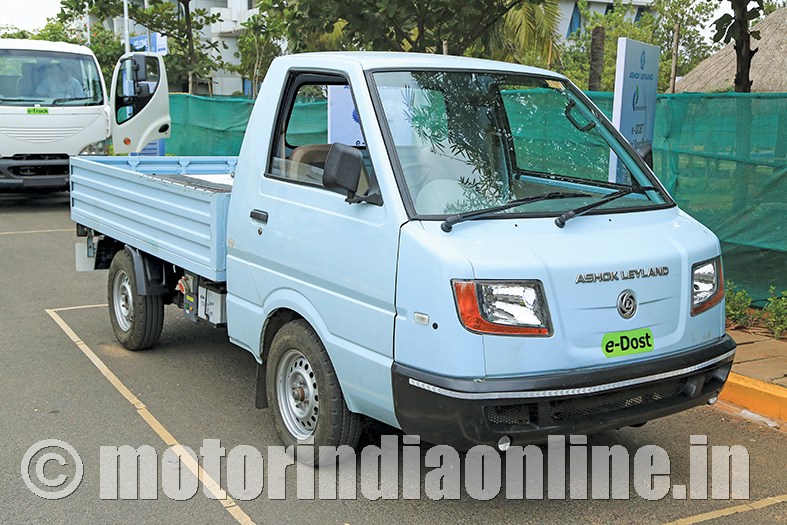“In the EV domain, we see the bus segment taking off first, but we are more excited by the opportunities offered by trucks where the profit and numbers are available; and waiting for that to happen. We have started developing products with different energy management strategies so that customised solutions can be offered for the applications,” discloses Mr. Karthick Athmanathan, Head – EV & eMobility solutions, Ashok Leyland Ltd. (AL)

Excerpts:
EV and eMobility (Electro Mobility) are the new buzzwords in the auto domain. In this regard, can you share the details of approach and direction of your new division when AL is celebrating the 70th year of its illustrious journey
In August last year, we had informal discussions at the board level on this topic, and it was evident that a big chunk of diesel vehicles will shift to EV in future. There were only two questions – “What will be the technology?” and “When will we be getting there?”
It was decided to talk to the various tech providers and holders, get their feedback and evolve a learning plan, for it was a new area to AL. As technology was evolving continuously we decided to have multi-pronged strategies and revisit the plan every quarter to review the various options.
In the CV sector, be it diesel or electric, the paradigms are easily set from the customers’ perspective, viz., least TCO and vehicle should keep running for the market application.
It was also decided that our group will not operate in the classic auto way but behave as a start-up inside AL. We have also set up an advisory panel comprising top-class professionals to review the progress and give their feedback.
In line with the above, various product developments are taking place across the portfolio. Also technology and supply chain tie-ups are made, and we hope to see respectable volumes by 2022-24 and a significant number of EVs in our production line. We have set up a separate development and pilot facility at the Ennore plant, which is likely to be inaugurated shortly.
Also AL is committing huge investments on product & process utilities and service capabilities to move ahead in this greenfield area.
Can you elaborate on the EV and eMobility solutions program? Why has been the hybrid CV thought of as the next natural move sidestepped and EV attracting all the attention and thrust?
We see eMobility as a very generic drive term and EVs are the products across our portfolio, viz., buses and trucks, and all these to be delivered with e-power drive units. We use eMobility as a service offering various solutions on revenue opex basis to customers.
In some cases, we can run it for the customer; also a customer could run it and pay only per km while another buy the bus, run it and we supply the energy for the operations. Hence many options are available through these models, but all of them are on opex basis and see these as significant growth drivers.
We are not pursuing the hybridization route for many reasons, and more importantly, most of the reasons for pursuing it have already gone away. Firstly, with the battery cost being high, hybrid was a good reason. But with the prices of batteries coming down, the situation has changed. In reality, the hybrid bus is more expensive than an EV bus.
Secondly, hybrid was conceived as a nice intermediate step. However the technology is more sophisticated than EV, and doing a hybrid means more technology, more efforts and more issues. Thirdly, the ‘range factor anxiety’ which is a valid reason and hybrid addresses that issue. However through the energy management concept this factor has been sorted out for the EV bus, and it will be demonstrated in the next 3 to 4 years.
Unlike in a car the CV customer has no anxiety factor as long as a firm technical solution is provided. We invariably have set business patterns and routes, and this also alleviates the anxiety issues.
Lithium-ion (Li-ion) battery has taken the centre-stage while various other power solutions also being pursued for the way forward. Comment on the same, your approach and the dominance of China in the Li-ion area.
Even if various technologies emerge, you cannot wish away the Li-ion route. Fuel cell, Aluminium-air generator and Micro turbine are some of the options. Essentially these are in-vehicle power plants for battery charging, and we call these by a generic term ‘range extenders’. In Li-ion there are various options available, and we are exploiting the state-of-the-art technology and conceiving various innovative business models.
AL could be globally the first among CV majors in providing the technology for long distance travel without dumping batteries in the vehicle as the solution.
China is the biggest player in the Li-ion area and happens to be a big consumer as well cornering about 60% of the total market. Hence they have a robust supply chain and there is merit in going through them.
But there are also other competitive options available. Success lies in going with the balance 40% and not conceiving something and getting held as hostage in the supply chain. Also to be noted herein is that a lot of man-hours and efforts are going on in examining alternatives to Li-ion, and we could be looking at very different power options down the timeline.
We have the steering committee to review all our decisions, and we are in no danger of getting committed to a particular route in the emerging situation.
Apprise us on the EV subsidies provided and the approach of AL in opting for the swapping route as compared to the fixed batteries in the vehicle.
The Government has provided a fair enabling figure under FAME-1 at 60% subsidy to EV buses for cities, subject to a maximum of Rs. 1 crore. It is doing its best to promote EV and industries need to reciprocate. In the recent tenders, some ridiculous prices have been quoted and this could force the Government to revisit the subsidy structure.
And if it gets revised downwards, we could be in trouble. All the Government decisions are taken in consultation with industries and currently there is nothing to complain about in their approach to EV.
AL has opted for the swap route and demonstrated it as a better idea, and it works fine as well. At the end of the day, AL will not invest in a business unless they are sure about the ROI in that technology option, and believes the customer should make money through the products offered, in line with AL’s philosophy for 70 years. In the swapping route we have 24 nos.
65 KWh batteries in a 40 ft container at the charging-cum-swapping station. When the bus provided with one battery for the drive enters the station, the swapping of the drained battery for a fully charged one can be done through the automated system in about 3 minutes, and we can do about 300 swaps in a day to meet the requirement.
We are working with Sun Mobility Systems on an exclusive basis for the swapping, and today swapping is one of the routes specified to meet the demands in all the tenders.
What about your viewpoints on the paradigm shift to the EV model and its impact on the ICE domain players, and the pollution levels in well to wheel assessment of EVs vis-a-vis other energy routes for mobility?
Our suppliers know us well and also about the business. The product and technology may be different, and we believe that the technology can always be bought. We value our long years of business relationship with them and will extend support in their overcoming the trepidations during the technology transition.
As for pollution, no full-scale assessment has been done, and we believe it’s the responsibility of the Government to do it, and the industry has to respond to the Government impetus in this direction. Our job is to deliver value to the customers, and we have invested in BS-VI while EV is a long way off. Tailpipe emission in cities is killing people, and in this regard EV adoption is a clear-cut solution.
As for the cost savings to the customers, we are doing our best to achieve it and support Government moves in the sunrise sector.

